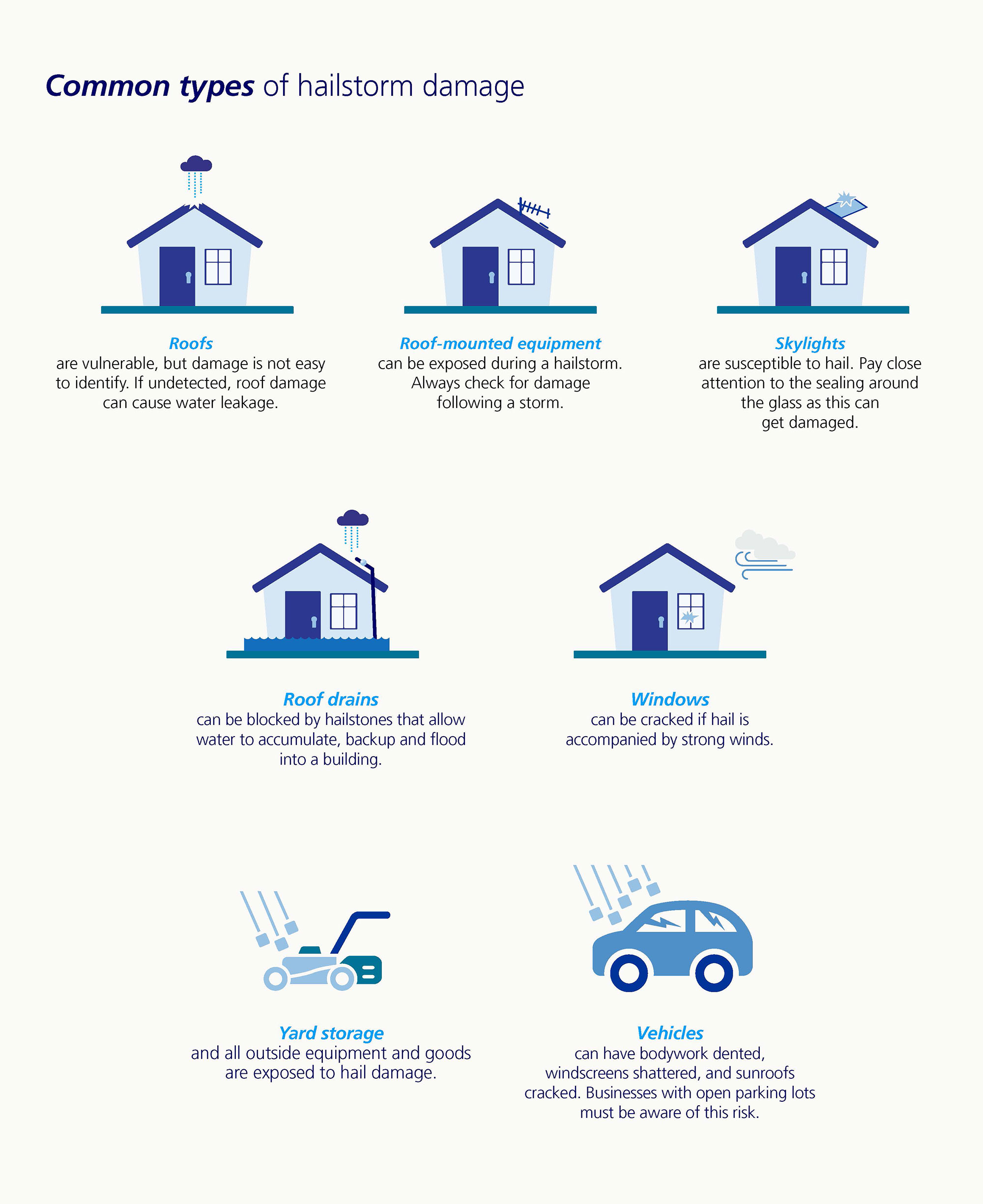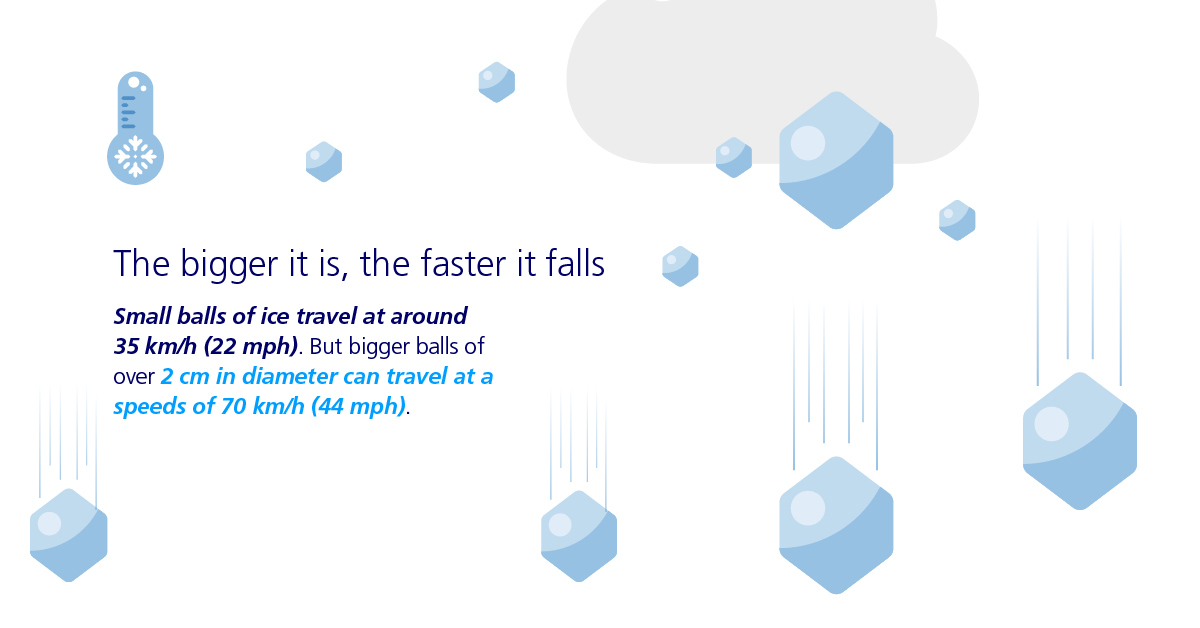Great balls of ice: Hail protection advice
Natural hazardsArticleJuly 22, 20203 min read
Hail is one of the most common and costly natural hazards globally, capable of causing extensive damage to property, vehicles and crops.
Hailstones vary greatly in size, but even small ones – driven by gravity and strong winds – pose a danger to anything or anyone caught in a hailstorm.

To understand your potential exposure to hail and take protective measures, it firsts help to recognize the common types of hailstorm damage.

Preventing hail damage
Once you have identified common types of hailstorm damage, follow these tips to prevent and reduce the damage:
- Roofs: Select impact-resistant roof coverings. If possible, introduce a slope to your roof as it will sustain less direct impact from hailstones.
- Roof-mounted equipment: Solar photovoltaic modules and heat ventilation and air conditioning (HVAC) equipment should be designed or protected to resist hail damage.
- Skylights, windows and doors: Use glazing that has been tested for missile impact to resist hail damage.
- Roof drains, gutters and drain spouts: Ensure they are kept clear of debris and are not damaged. Invest in guards and filters to keep out grit.
- Windows: Invest in storm shutters. On the inside, close blinds, curtains, and hang blankets to reduce the likelihood of injury and damage if windows are smashed by hail.
- Outdoor equipment: Place hail screens, guards or steel wire mesh (supported on a steel framework) over vulnerable equipment.
- Vehicles: Park vehicles in a garage or cover with heavy blankets.
- Crops: Use a hail-proof protection system, such as hail shield fabrics, flat nets, or other kind of canopies. Consider side protection, as wind can change the hail’s direction.

After the storm
Once the hailstorm has passed, evaluate your property for potential damage.
Firstly, ensure the safety of people. Remove any broken glass to prevent injury and cover broken windows with plastic. Clear hailstones accumulate in walkways and parking lots to avoid slips or falls.
Then remove ice and hailstone debris from roof drains, gutters and drain pipes. If the roof insulation is damaged, cover the exposed equipment and material with plastic to prevent water damage. Have a contractor examine the building to make sure that there is no unseen damage.
Is it really safe outside?
Once a hailstorm has subsided, wait an hour before going outside as it is likely the weather will still be dangerous with high winds and lightning. Conditions that create large hailstones are also those that lead to tornadoes, which can have far more devastating consequences. Flash flooding is a possibility if the hailstorm is accompanied by rainfall, or a thick layer of hail quickly melts.


